“And what do we have here?”
I shook my head as I worked around some sprouts that had poked through the ground. It was early spring and the garden was coming back to life. I wasn’t talking to anyone in particular — just myself. I do that a lot when I’m gardening.
I hadn’t planted anything in that corner of the garden. The previous year, I dug up an overbearing cedar shrub that was consuming the space. Now bare, I was looking forward to planting something proud and colorful. My garden, once again, was several steps ahead of me.
I knew it wasn’t a shrub, and there were no tulip bulbs in that plot (unless the squirrels had been busy replanting). Although possible, the sprouts didn’t look at all like tulips.
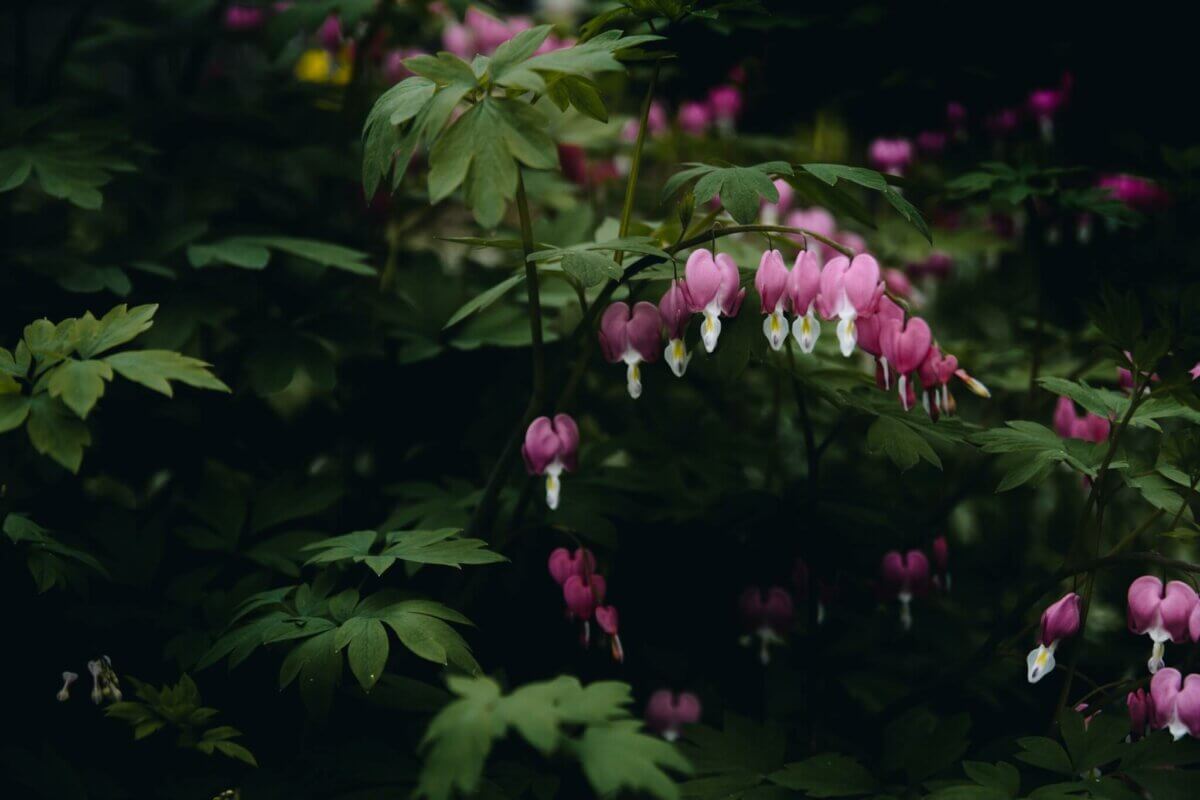
Whatever it was, I was willing to wait and see. So much of gardening is a wait-and-see game. It was still too early to plant, so I left the sprouts and waited. And waited.
They grew. They blossomed. And what should appear, but a prolific display of deep pink bleeding hearts. I then recalled planting a bleeding heart in that general vicinity about ten years ago but gave up when it didn’t return. I guess the invasive cedar shrub discouraged it. Now it was back in full glory.
Related Post: Strange Names For Beautiful Flowers
Since that resurrection, I’ve divided and replanted bleeding heart all over my gardens, and I enjoy their colorful displays every spring.
But what is a bleeding heart? Is it a flower? Some sources describe it as an herb with young leaves (collected in early spring) that can be cooked and eaten. And yet, it’s poisonous and known to cause skin rashes. Not something I’d want to try. Besides, if it’s only edible in the early spring, it defeats the purpose of enjoying its beautiful spread of heart-shaped flowers.
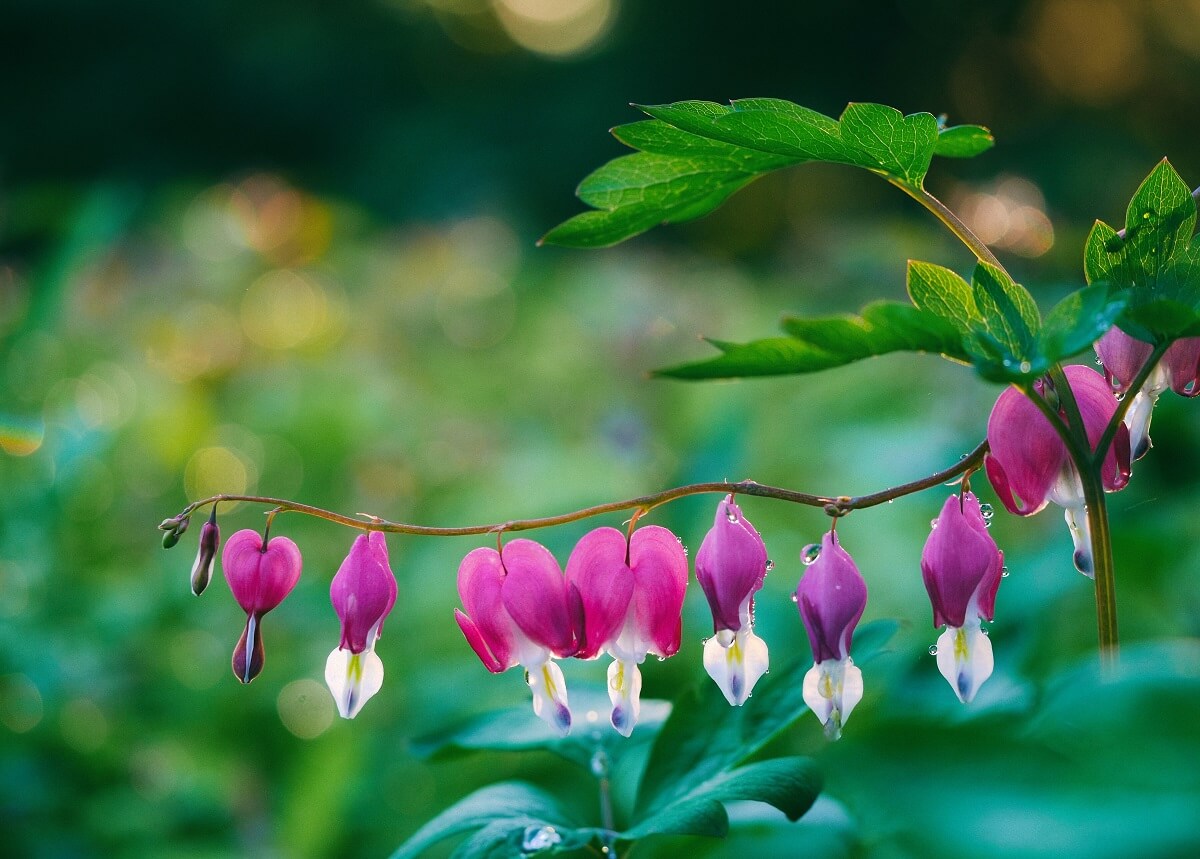
Still, it is an herb. Dicentra spectabilis from the Papaveraceae or poppy family, the tall stems burst into life in the early spring, producing dangling clusters of heart-shaped blossoms (hence the popular name, bleeding heart). They are mostly varying shades of pink, but there is a rarer version of a white bleeding heart (Dicentra spectabilis ‘Alba’). Also known as lady-in-the-bath or lyreflower, the bleeding heart is a perennial — though my first one, as already noted, vanished for a few years before returning.
The plant does spread into large clumps, sometimes reaches a height of 2 feet, and it enjoys loose moist soil in a shady location. Some people have been lucky to enjoy a second blooming period in the cooler autumn months, but with our hot, humid summer, my plants usually dry out before the relief of autumn. Fortunately, they continue to reappear in the spring.
Propagation can be done by collecting the seeds. However, I find my plants naturally seed themselves. Either with the wind or the animals and birds, I am forever finding new sprouts of bleeding heart appearing all over the yard in the grass, the gravel driveway, between bricks of the interlocking pathway, but seldom in the garden near the original plant.
Related Post: Homestead Stories: Forget Me Not Flowers
When the new sprouts are about 6-inches tall, I carefully extract them from the ground and relocate them to another garden, assured that the following spring will produce some heart-shaped flowers on my new transplants.
The plant divides well. It’s actually a good idea to divide the plant every couple of years, to keep it strong and healthy. Much like hostas or even daylilies, bleeding heart can be dug up and divided once they finish flowering for the season. Although, if it’s an unusually hot, dry summer, it’s perhaps best to wait until the following spring and divide the plant early before the flowers appear.
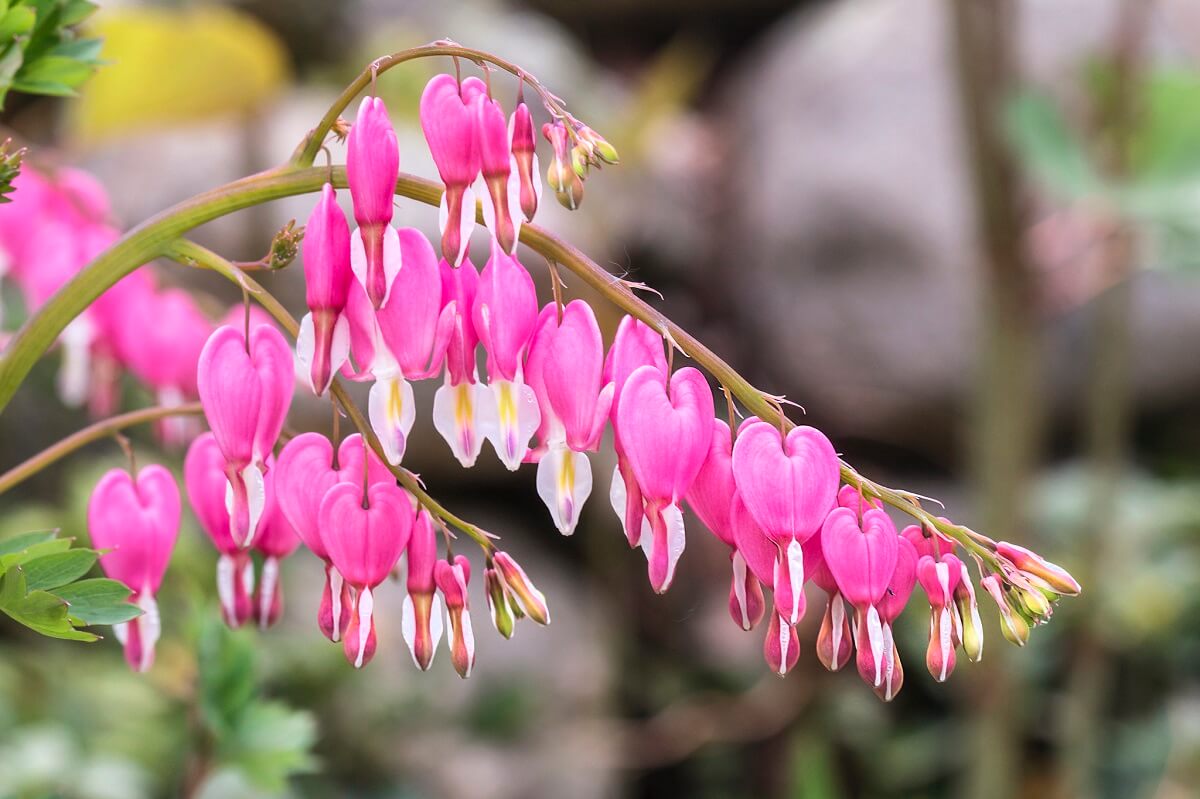
To divide the plant, dig up the roots carefully and remove the roots that have already dried and shriveled before dividing the remainder. It’s important to plant the newly divided plants immediately in loose, organically composted soil in a shady location, and water well.
At the end of its flowering season, the bleeding heart flowers will dry and drop their seeds. The leaves will also turn yellow and wither. It’s a good idea to cut the plant down to the ground at this time. This allows the roots to strengthen without wasting its nourishment on the withering plant above ground.
But don’t remove any foliage before it turns yellow. During this important time, after the flowers are spent, the plant absorbs all the nourishment it can before it’s cut back for the season. All this extra care is important if you want to ensure larger, longer-lasting flowers.

As a perennial, bleeding heart winters well. If cut back after the plant yellows, all it requires is to cover the plant’s stumps with a thick layer of mulch. It’s a good way to insulate the roots and to add extra nutrients to the soil. You don’t need to purchase bags of mulch. If you have deciduous trees on your property, natural mulch is readily available. I rake my massive supply of leaves onto all garden areas for the best and most nourishing mulch.
Related Post: Using Fall Leaves For Winter Mulch
Does bleeding heart attract pests? Of course. All plants are subject to some type of pest problem.
Aphids are the worst. As the heat of summer dries the bleeding heart foliage, aphids move in to help it decay, sucking out sweet sap from the leaves and stems. A few aphids are tolerable, but an infestation can kill bleeding heart.
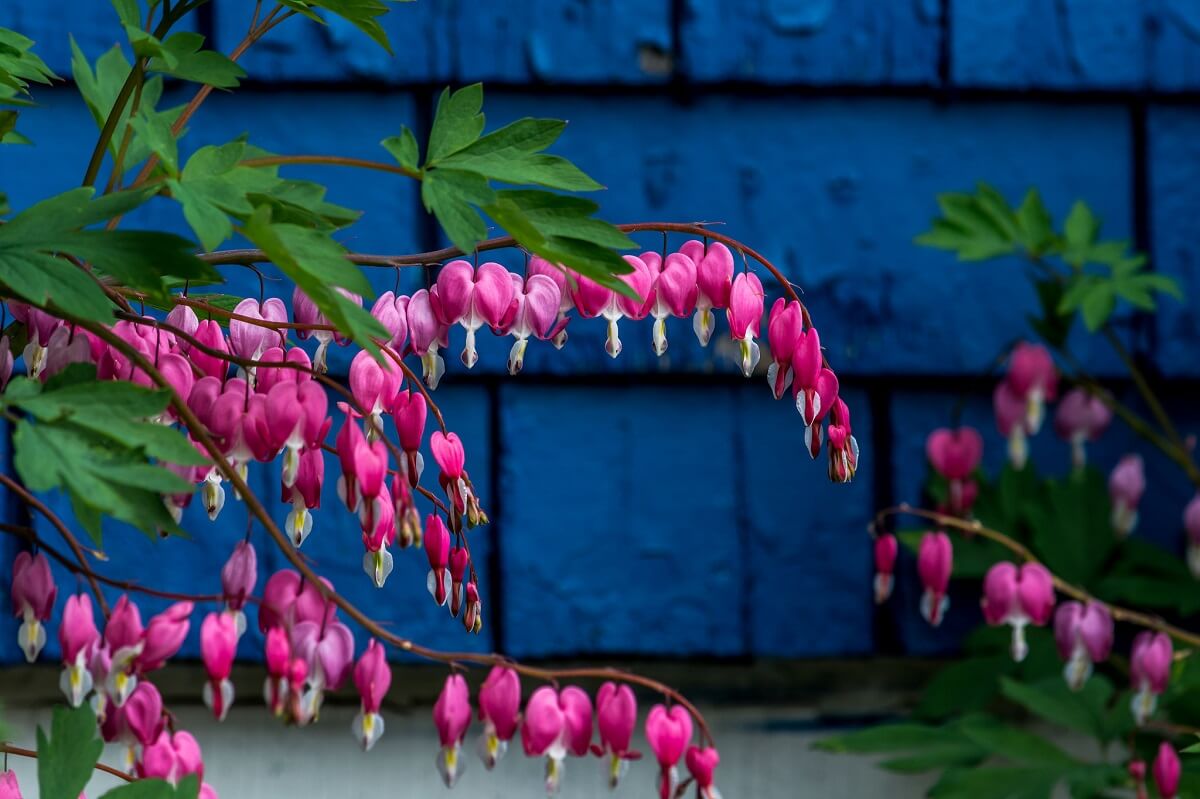
Once the tiny green or black bugs are evident on the stems or undersides of the leaves, spray daily with an organically made insecticidal soap. My grandmother would recycle her dishwater by pouring it over the plants at night. This also works for slugs and snails which can chew ragged holes in the leaves.
Related Post: How To Get Rid Of Aphids
Snails might pose more of a nuisance as they are impervious to most sprays. The best way to rid the garden of snails is to go hunting at night. Hunting for snails, that is. Catch them, one by one, and drop the pests into a bucket of soapy water. The important thing is to avoid spraying chemical solutions as they can kill the beneficial insects that keep the bleeding heart healthy. Also, don’t spray on excessively hot days or when the plant is in full sun as it will cause the foliage to fry – quite literally.
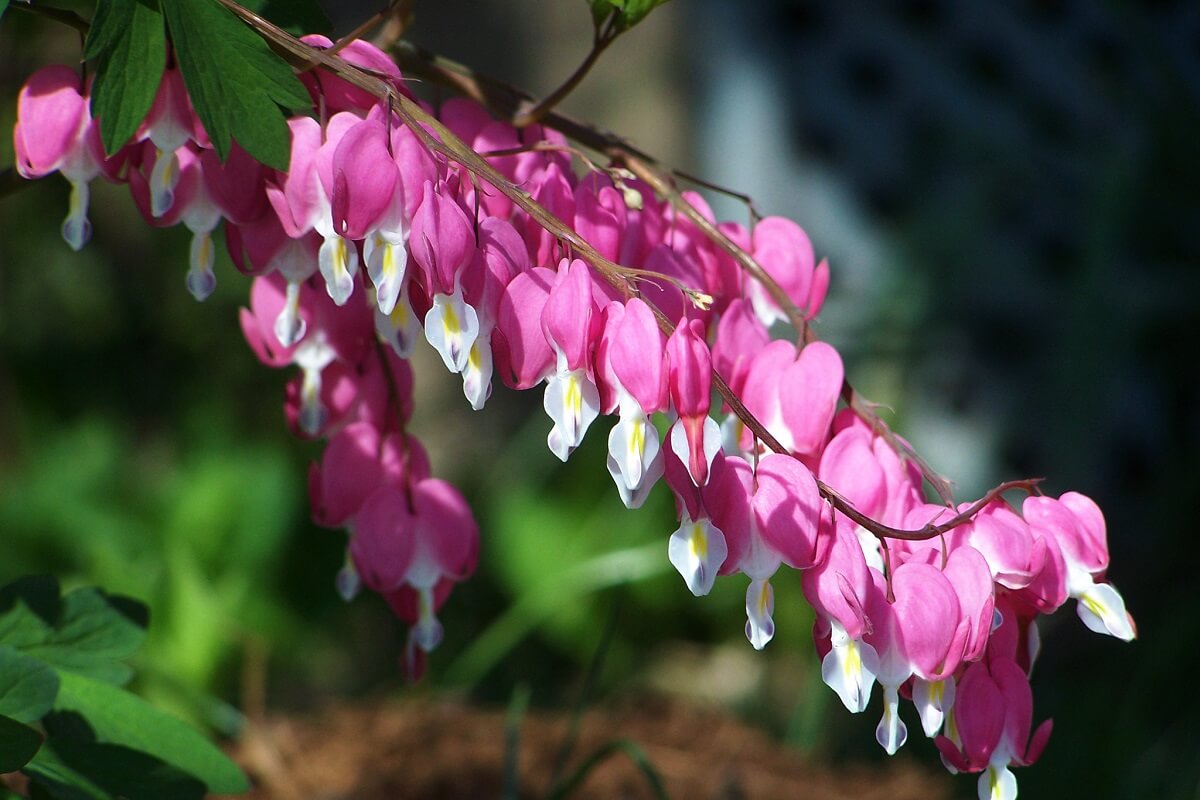
Bleeding heart is definitely one of many home gardener’s favorite flowering plants. Easy enough to grow and prolific in its ability to seed itself and spread, the plant makes a showy addition to any garden. Sadly, it only blooms in the cool months of early spring.
For me, what began as one plant that bloomed for a solitary spring, and then disappeared for several years before resurfacing, has multiplied many times over. Although I have added the rarer white bleeding orchid to my collection, my preference will always remain the various shades of pinks and reds.


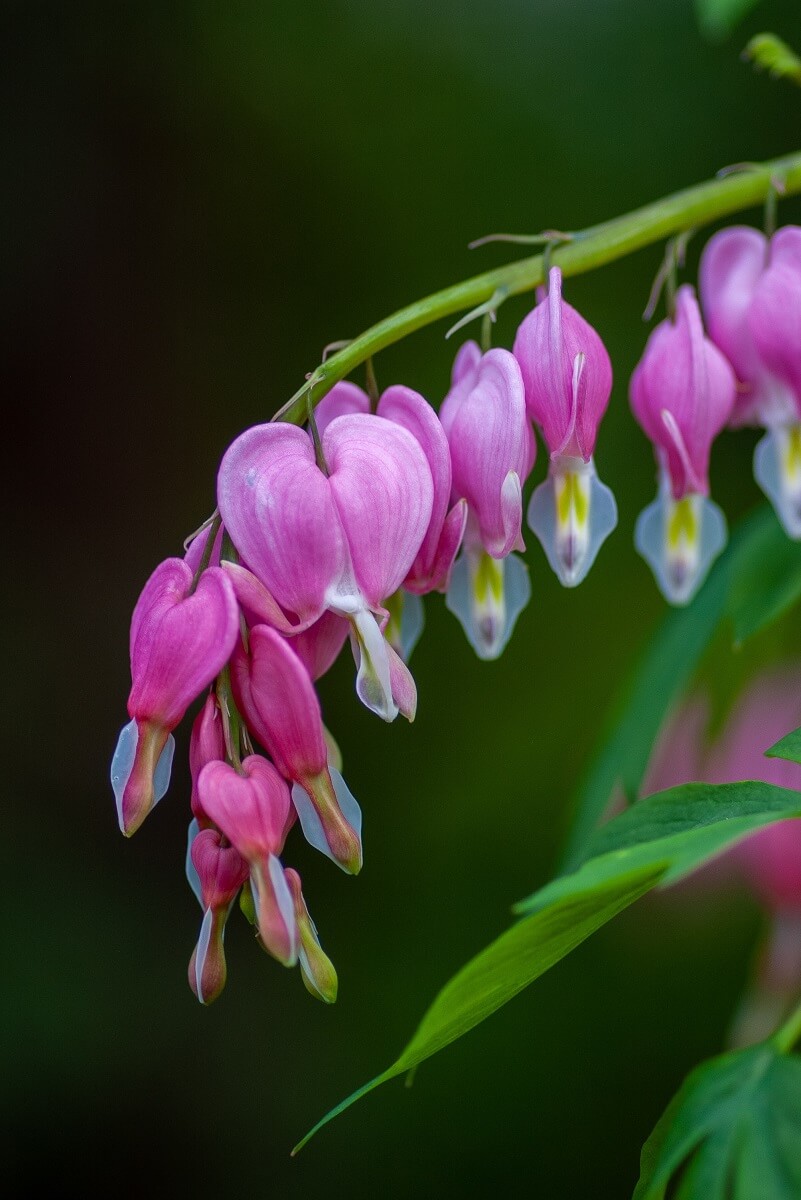







































Hello, the bleding hearts where i leave are a lovely deep red. Do you know if this is due to soil pH, temperature or is it a different variety completely?
You’re probably right. Most sources suggest that the soil pH affects the color. Also the vicinity to other colorful flowers might affect it. Are there any deep red flowers of another variety near?
Bleeding hearts are beautiful perennials! I just started a landscaping company, and I love seeing bleeding hearts in peoples’ gardens and designs. Thanks for sharing your insights!